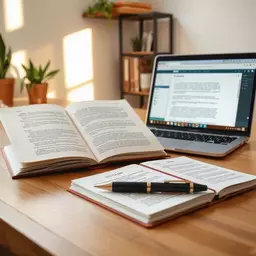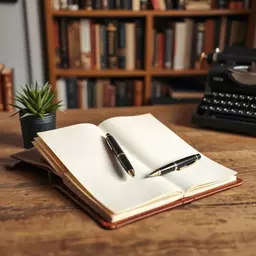Character Arcs Explained Simply
By Clara Eastwood / Nov 11
In the realm of fiction writing, a wise writer once said, “A story is a character in motion.” But motion without direction can lead to chaos. This is where effective plotting tools come into play, uniquely guiding your narrative journey.
Each writing style has its unique characteristics and preferred tools that enhance the writing process. Below is a visual comparison of the two styles.
As a fiction writer, I know that plotting can be one of the most challenging aspects of storytelling. It’s where your idea transforms into a structured narrative. This is why using effective plotting tools is essential! They can provide a clear roadmap to guide your writing process and help you avoid common pitfalls along the way.
Imagine navigating a dense forest without a map. You might get lost or miss the beautiful sights along the way! Similarly, having a solid plotting tool can make your writing journey smoother and more enjoyable. With the right resources, you’ll find it easier to maintain focus and create a story that captivates your readers.
Plotting tools serve as a writer's best friend, offering guidance and structure. They help you organize your thoughts and visualize the flow of your story. Here are some key reasons why these tools are crucial for fiction writers:
Using a plotting tool can also enhance creativity! The structured environment encourages you to think more deeply about your characters and their journeys. For a broader understanding of various author tools, including plotting software, you can refer to the VCFA Learning Hub. With tools like those we offer at Fiction Frameworks, you can unlock your storytelling potential and approach your writing with more confidence.
Understanding your writing style can significantly impact the tools you choose. Are you a plotter who thrives on detailed outlines, or a pantser who prefers to write by the seat of your pants? Recognizing your approach will help you select the most suitable plotting tools.
Here’s a quick breakdown of the two styles:
At Fiction Frameworks, we understand that both approaches have their merits. That’s why we offer resources that cater to both plotters and pantsers alike! No matter your style, having the right tools can enhance your writing process and help you bring your stories to life.
As you consider the various plotting tools available, we’d love to know: Which plotting tool resonates most with your writing style? Are you a loyal user of a specific tool, or are you still searching for the perfect match? Please share your thoughts below!
Hearing from fellow writers can be incredibly insightful! Many authors have found that using plotting tools significantly enhances their writing journey. Let’s dive into some user case studies that spotlight how these tools have made a difference in their creative processes.
For instance, a mystery writer named Sarah shared her experience with Plottr. She expressed how the visual timeline feature helped her weave complex plot twists effortlessly. By mapping out her story's progression, she could keep track of suspenseful elements without losing sight of her characters' arcs. Isn’t that a game-changer? Learn more about this popular tool directly from Plottr's official website or read a detailed review at Kindlepreneur's Plottr review.
Another writer, John, a fantasy novelist, found success with Scrivener. He appreciated its robust organizational capabilities, particularly for managing multiple storylines and character backstories. This tool helped him develop a rich world that felt cohesive and engaging.
John mentioned, “Scrivener has transformed my writing process. The ability to compile research, outline chapters, and draft all in one place has been incredibly liberating!” This just goes to show how a well-chosen tool can transform your writing experience.
Let’s not forget about genre diversity! Fiction writers of all types have found their perfect plotting match. For example, Lisa, who writes romance novels, enjoys using Dabble. She mentioned that the simplicity of Dabble’s interface allows her to focus more on her characters’ emotions rather than getting bogged down in complicated features.
She said, “Dabble made it easy to focus on my story without distractions. The minimalist design is just what I needed!” This perspective highlights how choosing the right tool can align perfectly with your writing style, making the process enjoyable.
When it comes to plotting tools, many writers have questions! It’s essential to address these to help you choose the best resources for your writing journey.
One frequent question is: “What are the best plotting tools for different writing styles?” The answer depends on your approach. If you're a plotter, tools like Plottr or Scrivener can provide the structure you need. If you lean more toward being a pantser, Dabble might suit you better with its flexible approach.
Absolutely! Many writers find success by combining different plotting tools. You might use Plottr for your initial outlines and switch to Scrivener for in-depth drafting. This flexibility can help you leverage the unique strengths of each tool.
When I started using multiple tools myself, I noticed a significant boost in my productivity and creativity! Don't hesitate to experiment and find what combination works best for your unique writing style.
Choosing the right plotting tool is a personal journey! Consider what you need most: structure, flexibility, or a combination of both. Each writer's process is unique, so take your time to explore options.
Reflecting on my own experiences at Fiction Frameworks, I believe it's crucial to select a tool that resonates with your writing style and goals. Your plot deserves the best framework possible!
As we wrap up, here are some key things to keep in mind when selecting your plotting tools:
Remember, the right plotting tool can make all the difference in your creative journey! It can empower you to bring your ideas to life with clarity and confidence. So, dive in, explore your options, and let your stories unfold!
Here is a quick recap of the important points discussed in the article:

 Character Arcs Explained Simply
Every compelling story resonates with readers because of the evolution of its characters. Whether it
Character Arcs Explained Simply
Every compelling story resonates with readers because of the evolution of its characters. Whether it
 Outline Your Novel with Templates
Have you ever been stuck staring at a blank page, unsure of where to start? Outlining your novel can
Outline Your Novel with Templates
Have you ever been stuck staring at a blank page, unsure of where to start? Outlining your novel can
 Plotting Fiction: Strategies That Work
Did you know that a well-structured plot can make the difference between a reader putting your book
Plotting Fiction: Strategies That Work
Did you know that a well-structured plot can make the difference between a reader putting your book